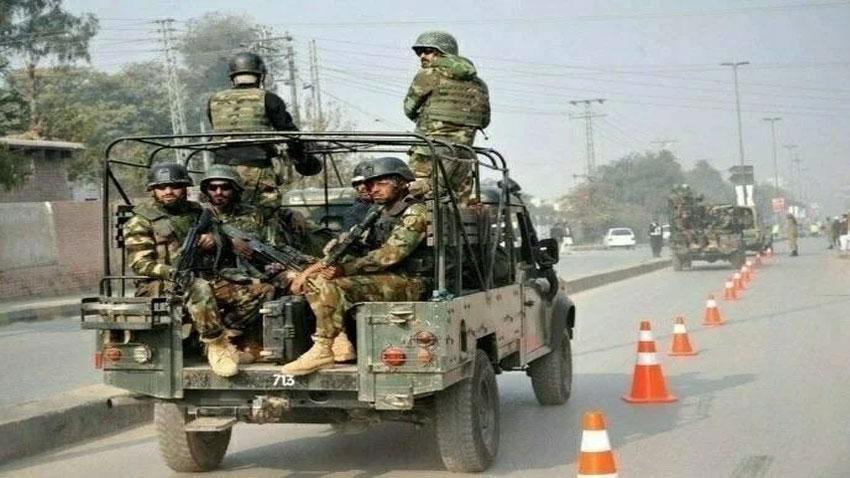A massive quake near Marrakesh on Friday night has killed more than 1,000.


More than 2,100 people are dead after a powerful earthquake with a magnitude of at least 6.8 hit Morocco Friday night near the city of Marrakesh, the largest such quake to hit the country in decades. A 3.9-magnitude quake, likely an aftershock, followed Sunday morning, according to the US Geological Survey.
The death toll is expected to climb as rescue workers search the towns and villages around the epicenter in the High Atlas Mountains and make their way through the rubble of Marrakesh’s old city, located about 70 kilometers north. In addition to the dead, some 1,404 people remain in critical condition, according to state broadcaster Al Aoula. Morocco’s leader, King Mohammed VI, has called upon the military to conduct search and rescue efforts, and other nations including France, the United Arab Emirates, and Turkey have pledged their support with the operation, though some rescue teams have complained that the government approval process is too slow as time to find survivors rapidly dwindles, according to the New York Times. Thus far, Morocco has officially accepted assistance from Spain’s government, which has sent 86 emergency personnel and eight sniffer dogs to the affected region, according to Reuters. Britain and Qatar have also deployed teams.
King Mohammed has been largely absent from efforts to stabilize the situation and provide support and guidance, which is beginning to hinder search and rescue operations, according to an Italian volunteer whose small team arrived Saturday. “There’s nothing here,” Marco Abate told CNN. “In Italy, when there is an earthquake, the next day there is a reception center with food and beverages and a field hospital. Many people here are sleeping on the street.”
The area near the quake’s epicenter is known for its small, scenic villages tucked into the mountains while Marrakesh is an international tourist destination with a history dating back to the Middle Ages. The famous red walls representing the old city’s boundary, as well as the Kutubiyya mosque in the old city, have both been damaged in the quake, but the full extent is still unknown.
Many buildings in the old city are hundreds of years old; the Kutubiyya mosque dates back to the 12th century. Because earthquakes are rare in Morocco, structures are not built to withstand them as they might be in a city like San Francisco or Tokyo. Additionally, the quake was just 26 kilometers below ground, according to the US Geological Survey, likely increasing the damage and portending a high death toll.
Both Marrakesh and the surrounding areas have a high population density, which will likely impact the casualty count. The impacted region itself has a population of around 1.8 million, but parts of Marrakesh are more densely populated than Manhattan, according to a New York Times analysis of data from WorldPop, a project from the University of Southampton in Britain.
Earthquake science has improved in recent decades and insight into fault lines and possible quake locations is far clearer than it was in the past, which can help drive policy and preparation. But it’s still impossible to predict when earthquakes will happen — making it all the more important that vulnerable regions are prepared to withstand the disaster.
Here’s how Morocco’s government is handling the crisis
Morocco does have a prime minister, Aziz Akhannouch, but the king has final say in matters of state, according to Morocco’s constitution. Any international aid will have to be at Mohammed’s invitation.
The monarchy is an important institution to Morocco’s national identity and dates back to the 8th century. Mohammed’s father, Hassan II, ruled for 38 years at a time of post-colonial transition for Morocco and the African continent more broadly; though he has a complicated legacy, he was a notable presence on the world stage and cultivated friendships with the US and Israel.
Mohammed, however, is often absent from his country, and not for diplomatic trips — he returned to Morocco this spring after extended trips abroad to France and Gabon, and is often seen in the company of German-born Moroccan Ultimate Fighting Championship fighter Abu Bakr Azaitar and his brothers. Though they haven’t been nearly as visible since Mohammed’s return, Moroccan press outlets often denigrate the brothers and express concern about their influence over the monarch, the Financial Times reported last month.
Morocco’s Royal Armed Forces have deployed helicopters, drones, and airplanes in the search and rescue mission, according to the Guardian; travel by land to affected areas has been made extremely challenging due to traffic and debris from the quake. Médecins Sans Frontières announced Saturday that it would send a team to Morocco and was already coordinating with local authorities. The UN is also standing by to help support rescue efforts, though as of Saturday night “The [Moroccan] government is deploying its own answer to the earthquake,” UN Resident Coordinator in Morocco Nathalie Fustier said.
Moroccans have been lining up to donate blood in the aftermath of the quake, but King Mohammed himself has not been seen or heard from in the interim; even his order to deploy forces for search and rescue was relayed through the Moroccan Army. Even though countries like Japan, Israel, and Turkey have offered support — and three French regions have even pledged $2 million for relief efforts — it’s not clear whether the king has accepted that aid. He has, however, called for mosques around the country to hold funeral prayers for the deceased at noon Sunday, CNN reports.
Though Morocco is relatively stable in comparison with neighbors like Libya and Tunisia, it’s still contending with serious economic strife — including an agricultural sector suffering from prolonged droughts and a tourism industry still recovering form the Covid-19 pandemic, not to mention crippling inflation due to the war in Ukraine.
Friday night’s earthquake is reminiscent of the one that rocked southern Turkey and parts of northern Syria in February, where inadequate infrastructure also contributed to the high casualty count and delayed search and rescue efforts. Though reforms to improve the buildings’ resistance to earthquakes were introduced in 2011, they have not been uniformly adopted in all of Morocco’s earthquake zones, the New York Times reported, and quality checks in poorer and rural areas are infrequent.

The 10 most read stories on Future Perfect in 2025
- 4 گھنٹے قبل

The best last-minute Christmas gifts you can grab for under $50
- 6 گھنٹے قبل
Metcalf suspended two games for fan altercation
- 5 گھنٹے قبل

Netflix’s growing live TV ambitions now have a host
- 6 گھنٹے قبل
Rozier lawyers move to dismiss betting charges
- 5 گھنٹے قبل
Pacers hope NBA looks at play that injured Jackson
- 5 گھنٹے قبل

Europol imagines robot crime waves in 2035
- 6 گھنٹے قبل

Call of Duty, Titanfall developer Vince Zampella has died at age 55
- 6 گھنٹے قبل
Chiefs agree to deal to move to Kansas in 2031
- 5 گھنٹے قبل

Humanoid robots are coming. Eventually?
- 6 گھنٹے قبل
Hawks reserve C Dante (ACL) out rest of season
- 5 گھنٹے قبل
LeBron vs. Dillon Brooks: 'Social media junkie' to 'Help the bear' and everything between
- 5 گھنٹے قبل












